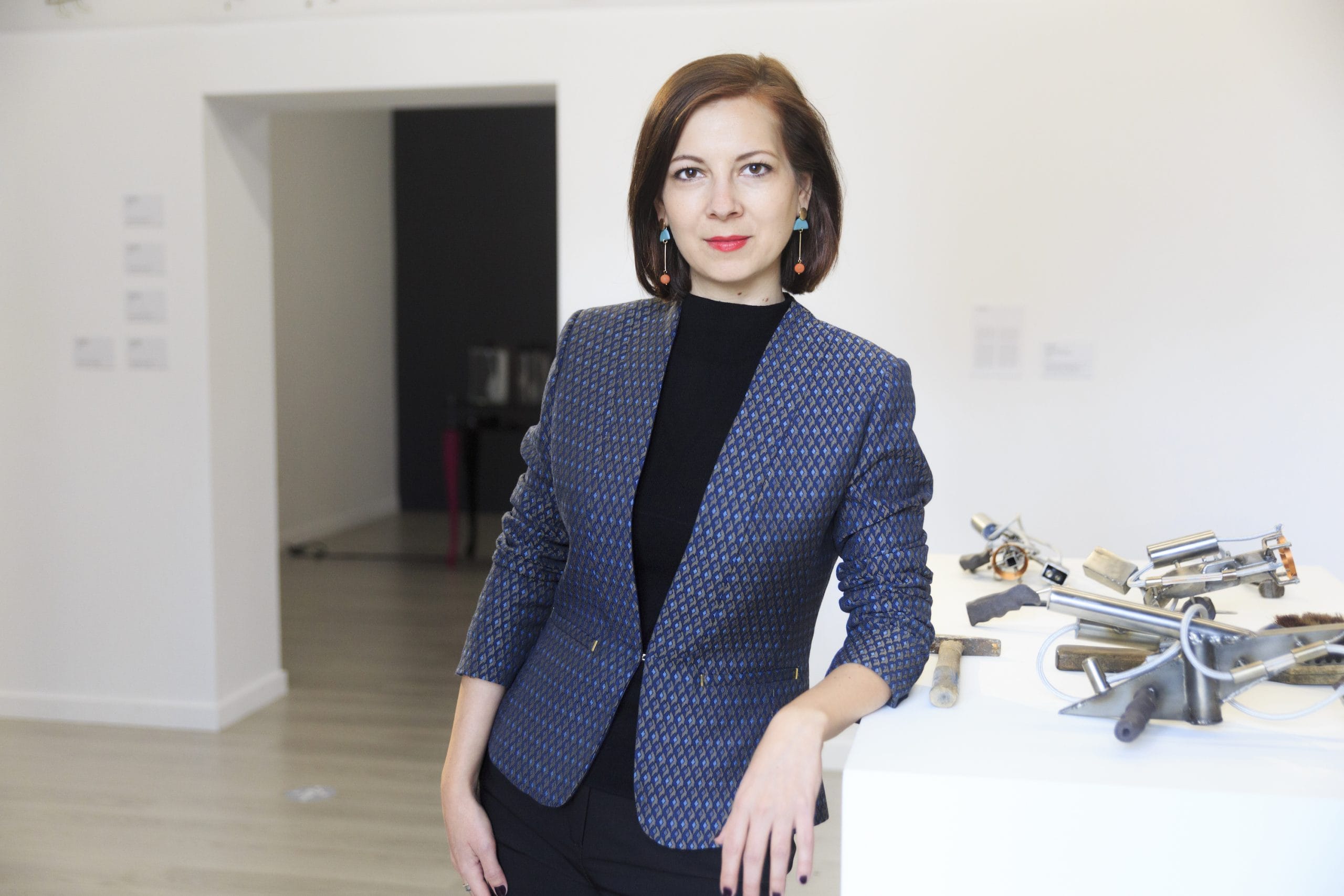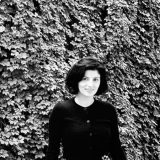Diana Marincu is an art critic and curator, and a member of AICA and IKT. Since 2011 she has curated an impressive number of art exhibitions. She has published a series of texts dedicated to contemporary art in important specialized publications.
Since 2012 she has collaborated with the Plan B Foundation in Cluj and with the Paintbrush Factory for six years.
In 2017 she obtained her Ph.D. from the University of Arts in Bucharest, in the Department of Art History and Theory. In the same year, she co-curated the second edition of the Art Encounters Biennial in Timisoara, together with Ami Barak. The event was appreciated by the local and international press and was visited by over 30,000 people.
She is currently the Artistic Director of the Art Encounters Foundation in Timișoara. Through the program developed within the Foundation, Diana Marincu aims to strengthen the links with the art scenes in the region and to support young artists.
At the beginning of this month, Diana Marincu received the Bega Art Prize 2022 for her involvement and curatorial vision, for the passion, curiosity, and intelligence that define her entire curatorial path.
Please tell me about your experience in the visual arts and the context in which you became a curator?
I graduated from the Faculty of Arts and Design in Timisoara in 2008, after a long period in which I thought I would become an artist, but I decided to study art history further and focus later on curating. I have had many professional models that have shaped me and contributed substantially to my journey, from teachers to colleagues, to artists and collaborators.
What is your area of interest? What themes and theories are you exploring?
My first exhibitions were greatly influenced by a more personal approach, related to autobiographical explorations, and then they became clearer and more engaged in themes that are specific to visual research.
The exhibitions I propose now start from an investigative method, and most of the time the questions I formulate resonate with the problems identified by the artists in their practice, from the visual and narrative strategies of image construction to the tension of the relations between the subject and the context, as well as the posthumanist turn in contemporary art.
The curator’s role is continuously changing. From your point of view, what does it mean to be a curator today?
I am concerned about the role of the curator, especially because I studied curating during my Ph.D. at the University of Arts in Bucharest, in the Department of Art History and Theory. I researched the curatorial discourses on identity, otherness/alterity, and periphery built in large-scale and biennial exhibitions from 1989 until today.
Today I believe that this role is encouraged by increasingly interesting and experimental institutional formulas so that the role of the curator has also diversified a lot. From a skillful politician to an inspired thinker, from an erudite museographer to a creative inquirer, all of this defines a wide range of identities under the same “hat.”
How would you define your curatorial activity?
Within the program created for the Art Encounters Foundation, I aim, together with the foundation’s team, to strengthen the links with the art scenes in the region, establish some artistic connections based on co-production, and support the young generations of artists.
But my curatorial work also includes other projects, related to education, through individual courses or mentorships that I hold.
Is there a risk that a curator will formulate and support through curatorial projects his interests rather than the interests of artists?
I think that, if there are any, these are isolated cases. I do not think that a curator’s reputation can be built without a positive and honest alliance with artists.
Can you tell me about how you build your collaborative relations with artists?
I enjoy visiting artist studios and developing long-term dialogues with them. There are artists with whom chaining of ideas is already so natural that I would like us to always work together. But curiosity always pushes me towards the younger generations, towards rummaging through studios, towards new and new contacts.
You have curated group exhibitions, as well as solo exhibitions. Is the experience the same or not?
In the case of the solo exhibition, the punctual research of the respective artist acquires a higher proportion and there the “portrait” of the artist must be nuanced, original, correct, honest, but also interesting for the public. Group exhibitions are sometimes more surprising because some juxtapositions create something else or can lead to future collaborations.
What artists, writers, academics, or curators inspire you in your curatorial endeavor?
Lately, I have been working a lot with literary references, with Italo Calvino or Roland Barthes being among the sources of inspiration. But artists such as Ciprian Mureșan or Anca Munteanu Rimnic are also among the models I look at.
How do you think the curator’s role will evolve? In what direction is it heading?
I think a lot of things are realigning in the art world, and the role of the curator is likely to go more and more towards a kind of activist-politico-diplomatic mediator, who is allied with those minorities or disadvantaged segments that need support. I also see more and more curatorial collectives emerging and operating on the idea of solidarity and an increasingly visible political agenda.
Who influences the artistic world? Curators, museums, biennials, galleries, auction houses, artistic groups, art universities?
All those mentioned, in greater or lesser proportions, depending on the history of each country, where some institutions have more credibility than others, where some organizations have a longer or shorter tradition, and this local specificity also makes the artistic scenes look different.
Photo credit: Pusha Petrov




